This page is dedicated in fond memory of Cambridge luthier David J Rubio, with kind permission of his wife, Nest Rubio.
This Website is best viewed with a large wide screen monitor
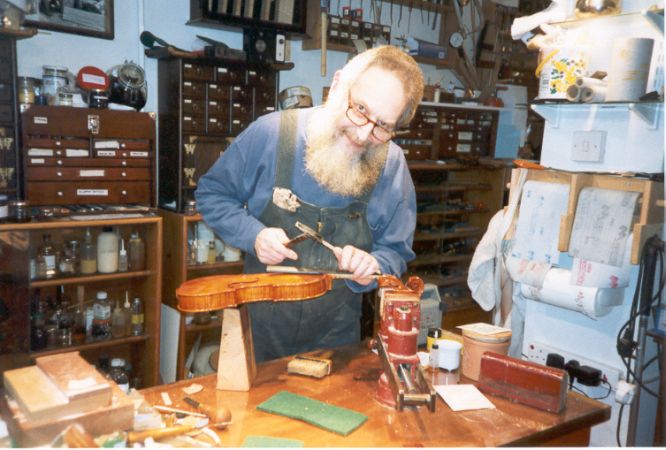
David Rubio was simply known by me as 'Uncle David'. We met in 1992 when I was 14 years old and we were best friends until his death in October 2000. Our friendship came about when my Grandfather bought me my first Rubio violin in 1992. David had a waiting list of 3 years for his instruments and his violins and cellos were in great demand. My first violin teacher, Brenda Farrow (a renown local pedagogue and player, student of Max Rostal and winner of a gold medal from the Guildhall School of Music in 1946), had heard the Britten Quartet play on their instruments made by David at a concert at the Wigmore Hall, London. She was not only impressed by the quality of the sound these instruments made but also the response the instruments had when played, that she ordered a violin from David. The time came when the violin was ready, but instead of having the violin she let me acquire her order from David instead, as I needed a better quality instrument. I aptly named the violin 'Brenda' because she had given me the opportunity of having the violin instead. David even wrote this on the violin's certificate which I still have.
Here are some photos of my first Rubio violin:

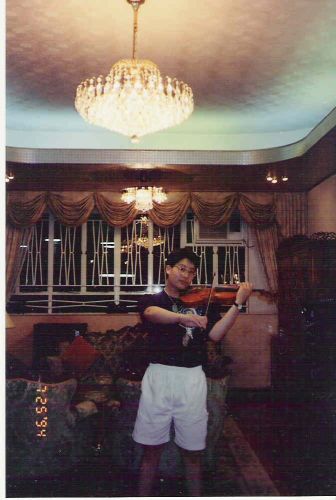
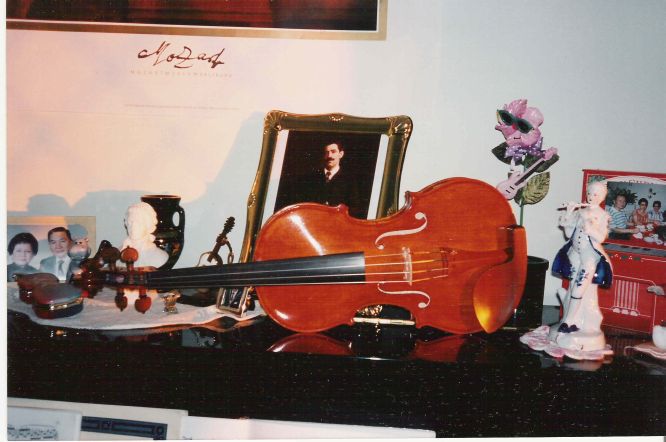
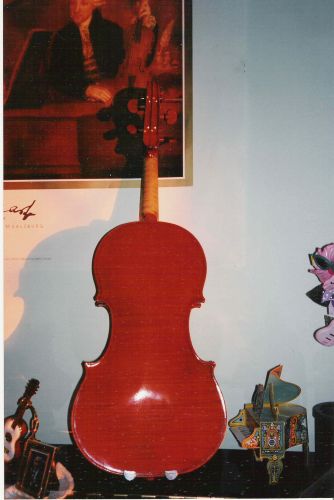
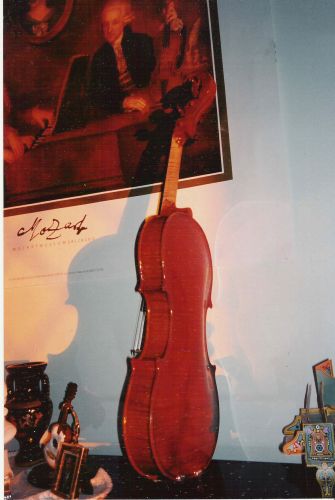

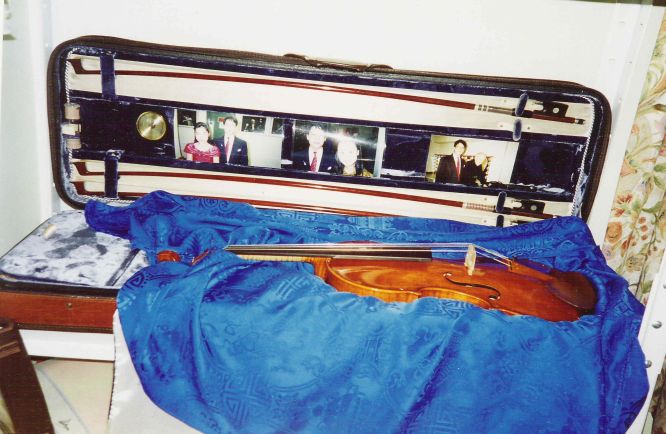
The first time I met David was at his home in St Peter's Street, Cambridge. It was all a very exciting experience, I felt so nervous; when i went to press the door bell and waved at the CCTV camera, I really did not know what to expect, and when he answered the door I was taken aback by his huge long beard! He looked like Santa but without the Christmas costume. What can I say, not only was he unique but his house was as well. The ground floor was the workshop where he and Nest worked (David on his instruments and nest on her rugs), upstairs was a huge open space like an American loft appartment (this consisted of the kitchen with rugs made by Nest on the kitchen table and fridge doors, the other side of the room was wooden panelled and had a grandpiano and space to try out the instruments). What was very pleasing was that I found someone who had a mutual love of teddybears! As a child he had been evacuated during the war and I recall him saying that he always had wanted a teddy back then, so now he was making up for it. Yes, David had teddybears around the house like me. I knew then we clicked and that we would get on just fine like a house on fire. David had a little bear in his overalls pocket called Solomon. You can see him in the photos. He went almost everywhere with him.The photos show two presents I bought David at Easter and another time, (Barnabus the bunny and BuBu the bear). David also had a great teddybear called Spencer bear whom he made a small cello for. Spencer was a lucky bear indeed, not only had he a miniture Rubio cello with a case from Paxman's in Romford, but Aunt Nest made him a small silk rug to sit on, I think he even had some cello music especially composed for him to play! (please see photos below). One time I took a Benton, a Scottish teddy (a present from My Grandparents from their trip to Scotland) to meet Spencer Bear; they sat together the whole afternoon whilst David and I was chatting and playing. I understand that Spencer Bear and all the other bears that Uncle David had now live with his sister.
The workshop

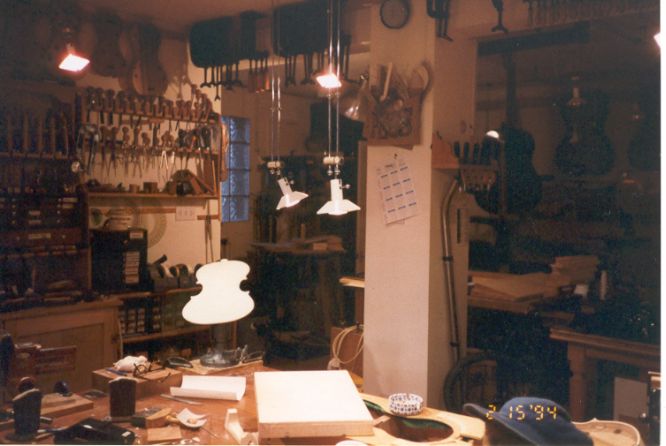
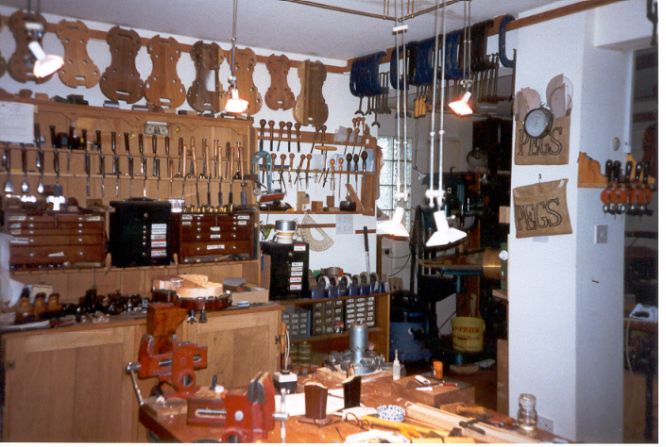
Spencer bear!
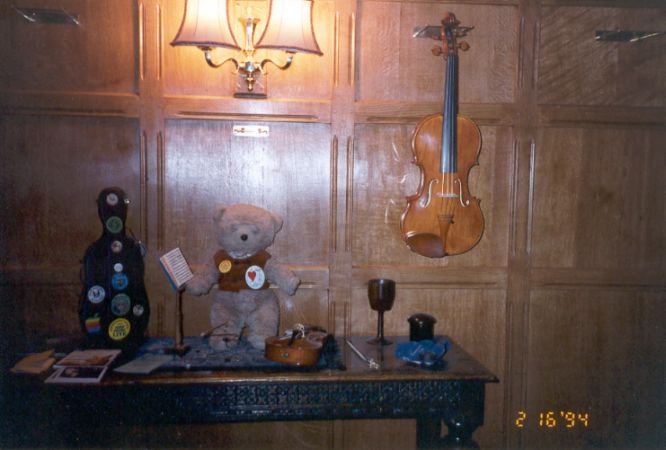
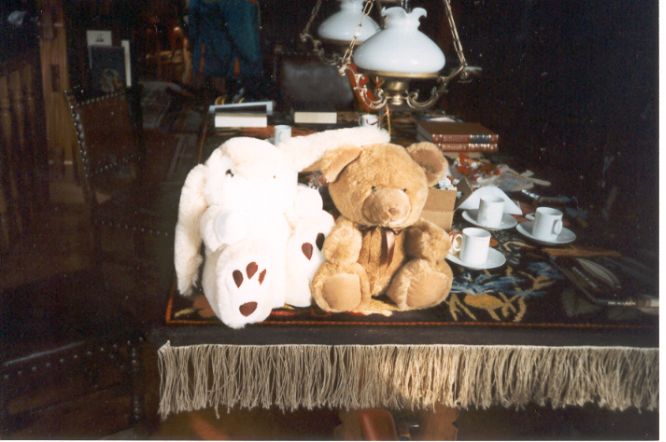
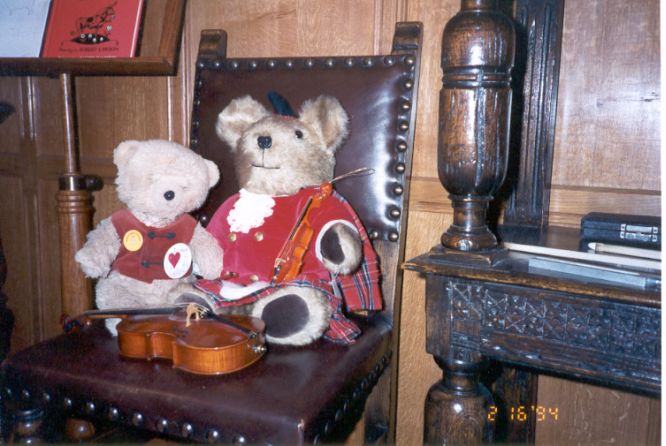
The first Rubio violin I had was called Brenda made in 1992. These are photos of David in the workshop working on Brenda, reshooting the fingerboard and doing a few adjustments:
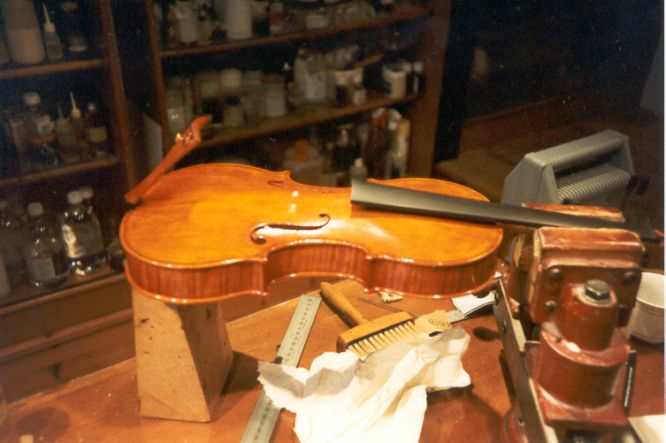
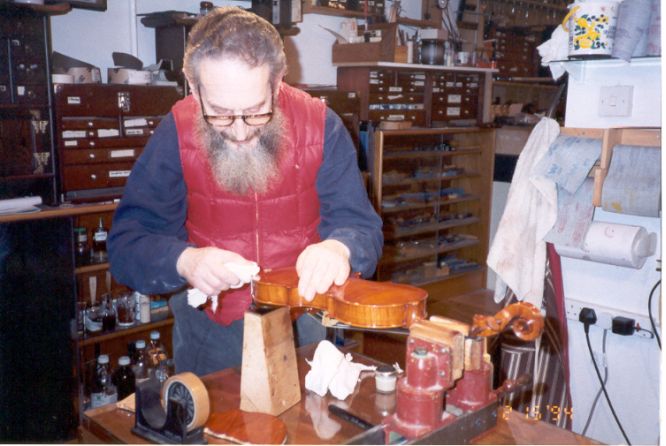
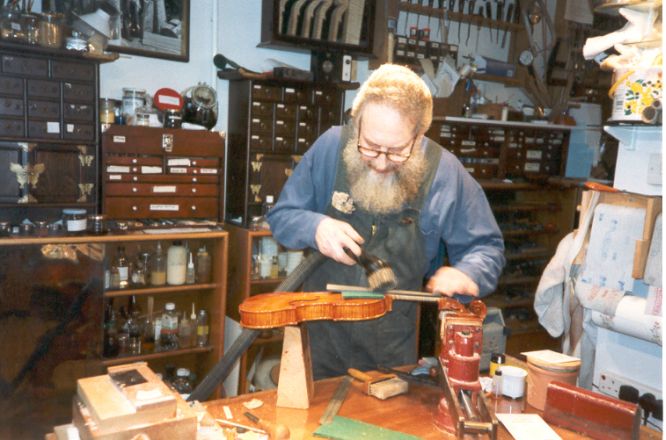
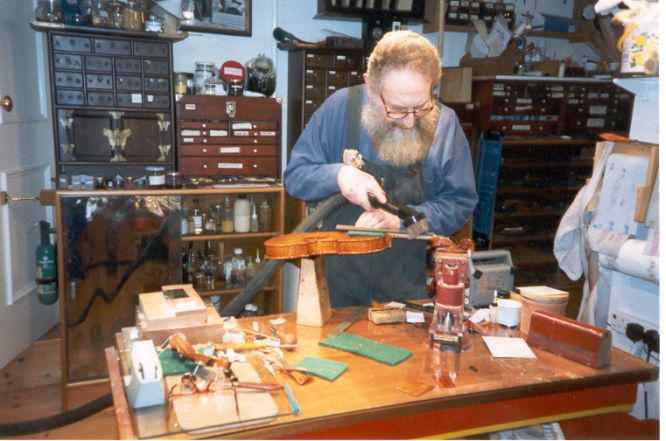
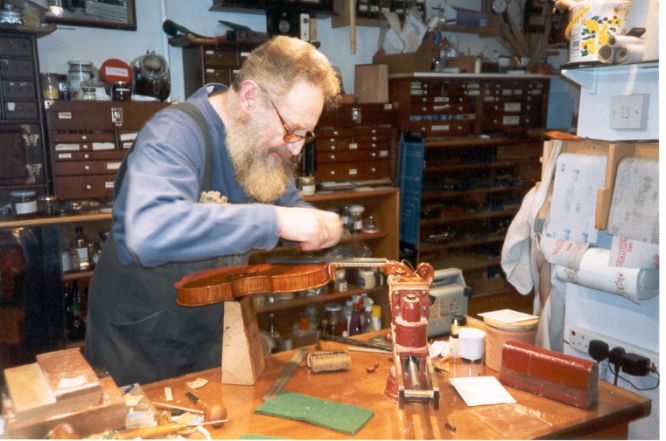
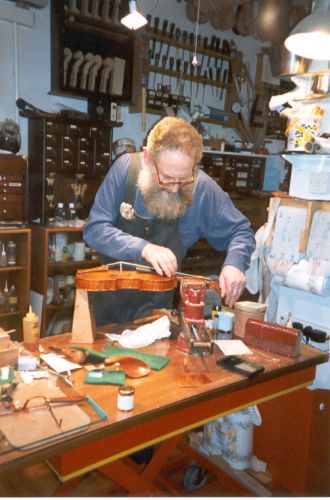
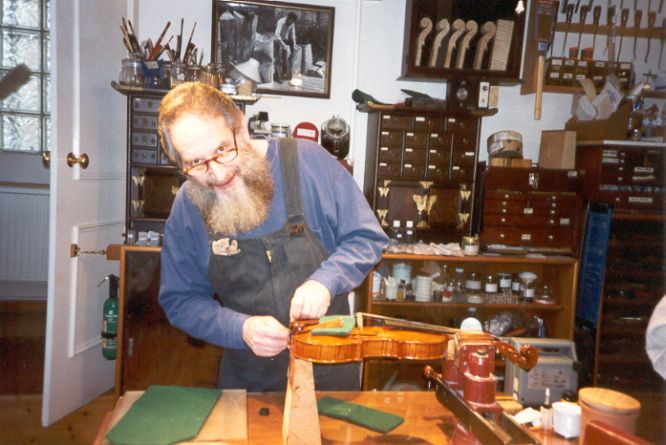
Uncle David and Aunt Nest were so welcoming and kind and I enjoyed their company so very much. The first thing through the door would be coffee and chocolates and watermelon flavoured sweets. The workshop was such an amazing place. David was always striving to make the best instruments and we always talked about the techniques he employed in his making, and he had also sorts of tools and machines, even one that would make tea leaves dance and wobble.
As a person, he was someone very special to me, the Father that I never had. We were close, he would telephone me about his work and we would talk about his latest instruments, experiments with new varnishes are moulds and models, and in fact just chat about almost anything. Our favoured topics would be those of great fun and scandal, such as the controversy of whether the violin known as 'Le Messie' in the Hills Collection at the Ashmolean Museum was truely by Antonio Stradivari or perhaps by his son Paolo. Many years ago the Ashmolean museum gave me permission to photograph the instruments in the Hills Collection. I gave all the photos to Uncle David who sent them on to his dendrochronologist friend, who I understood was of the opinion that the wood dated from a period just after Antonio Stradivari's death. The other side of the argument concerned dating by the nails used to attach the neck. I can't remember the outcome of the academic argument but I do recall discussing it with Dr Helene La Rue over coffee and chat at the Bate Collection, Oxford. Sadly all these are now fond memories as both David and Helene have died.
Photos of Uncle David, Aunt Nest, me and Mummy over the years

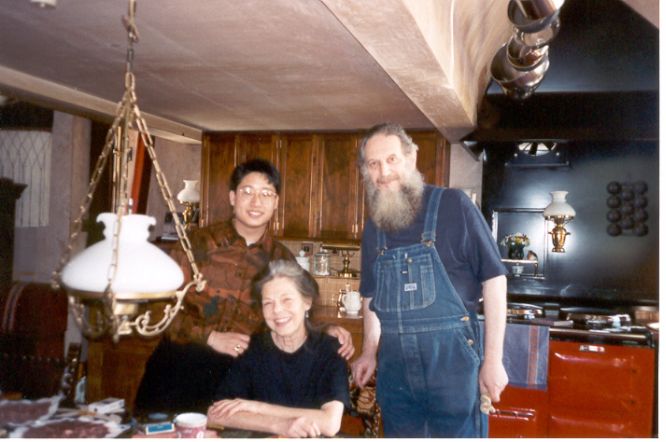
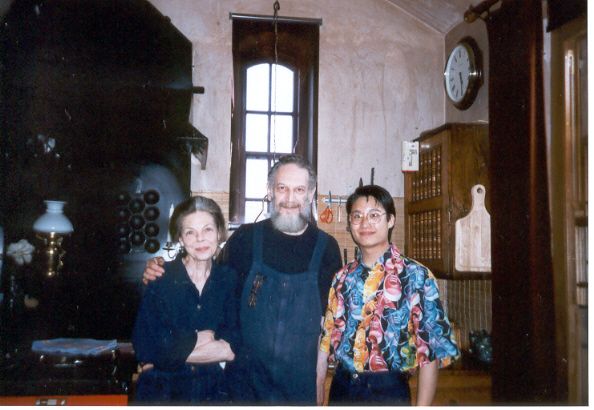
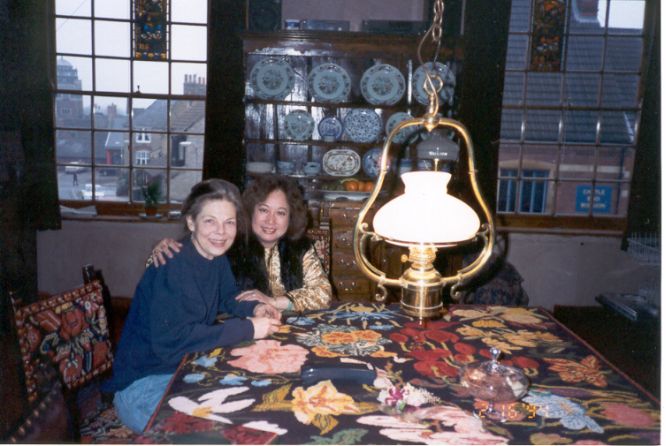

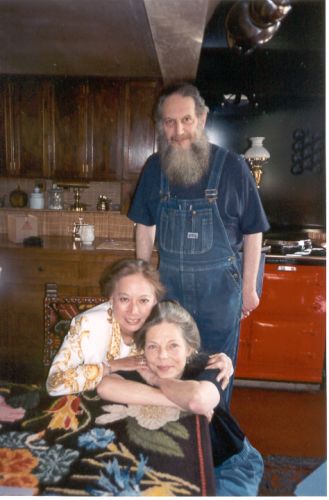
This is a photo of violin made by David. It is a copy of a decorated ornate Stradivari inlaid with pear wood. I do know that it is not an exact copy, only the ribs and scroll were decorated, he did not do the ivory inlay where the purfling would be or on the fingerboard (he said he thought it would impair the sound). I think this violin went to a client in Switzerland. It is a very attractive violin. I do not think it is a copy of the 'Hellier' but possibly a copy of the 'Sunrise' Stradivari, as this was mentioned on a few times I visited. Only the ribs and scroll are inlaid with pear wood; Uncle David didn't produce an exact copy and he felt that the diamond shaped inlay where the purfling would be would be too detrimental to the sound because a lot of cutting of the table would be necessary. Uncle David had lots of huge expensive books which had wonderful photos of Strads and Guarneri.
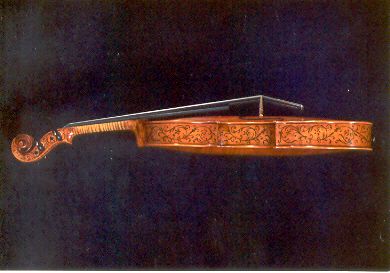
Since the world is blessed to have so many fine violins in existence by the Cremonese luthier houses of Amati, Guarneri and Stradivari, David always strove to perfect his art. We always talked about violins we had seen or which I been fortunate to play on. He did so much research into these instruments (and I think he worked with Professor Ralph Raphael and scientists from Cambridge University to find that many cremonese instruments had a mineral ground of pozzalanic volcanic ash applied to the wood before the varnishing process) and applied the fruits of his laborious endeavours to his own instruments. The results were amazing. When the volcanic ash was applied ot the wood, it made the wood look pink with no grain but when an oil was applied on top of this, then the grain showed through. He was even the subject of a televsion documentary called 'The Score' which was demonstrating the differences between the old cremonese violins with model violins and those made by David. The playing took place at the Wigmore Hall, and I think I recall that the players involved in the programme were Christopher Warren Green and Peter Manning amongst others. To my knowledge he made many copies of cremonese instruments for which he managed to obtain measurements, moulds and tunings for. My violin of 1992 was a composite of many differing features of Cremonese makers that David put together. After the wonderful Peter Bidduph Guarneri del Gesu exhibition at the Metropolitan Museum New York in 1994, exhibiting 25 fine examples of 'del Gesu's' work, David began making two models: the 'ex-Vieuxtemps' and the 'ex-Rode'. To my great disappointment I was unable to attend the exhibition in 1994 because I was taking my GCSE exams, but Uncle David bought me back a catalogue book from the exhibition which I still have. After more experimenting, he told me to sell my 1992 Rubio as he felt that he was now making better violins. He simply loved the old Italian violins. Here are some photos of my Brenda Farrow's violin, an Antonio Gragnani, made in the 1700s (I vaguely recall it may have been made in 1780). It was quite a lovely instrument to play and I played on it many times. She used to have an Amati when she was younger. Sadly she no longer played after retiring and she sold it at auction at Sotheby's I think in 2000:
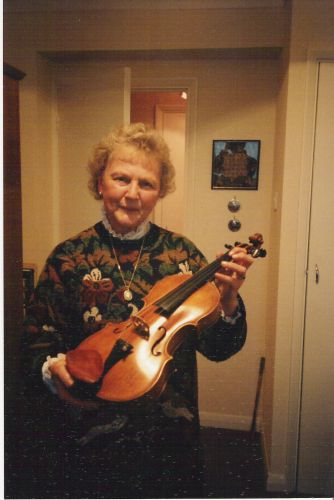
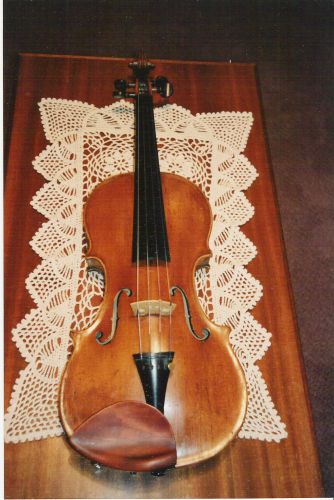
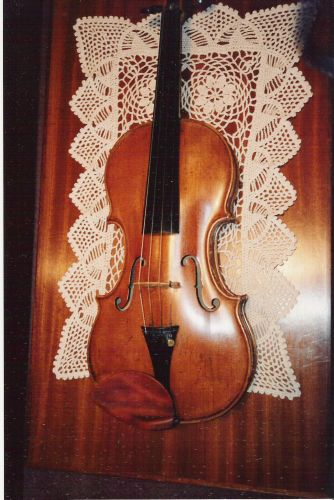
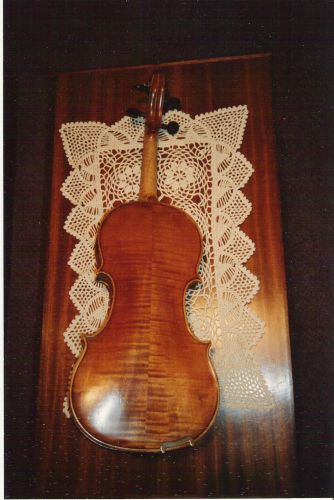
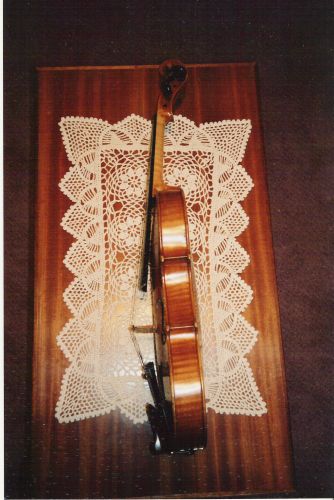

Brenda Farrow ARCM (later McGowan) passed on 3rd March 2016. She was a student of Max Rostal and graduated from the Guildhall in 1946 awarded the Gold Medal and was presented it at Mansion House after playing Beethoven's second Romance in F major. She was a local violin pedagogue in Southend on Sea, and was highly respected in the string teaching world. She was a member of ESTA for many years and was great friends with the violist Nannie Jamieson. She not only taught but performed many times concertos with the Southend Philharmonic Orchestra, and lead the Orchestra on many occasions as well. Many of her students went on to be performers, teachers and orchestral violinists. I was her last pupil and she was a wonderful teacher who would get the best out of her pupils - she was no push over, she was a touch cookie but very enthusiatic. Those whom she thought were gifted she went out of her way to pass on her knowledge and was always supportive and generous. She wrote a recommendation letter in support of my violin scholarship at Oxford University. Her method of teaching and playing was based on Rostal and the Carl Flesch school. She also collaborated with the composer Edmund Rhubbra on his vioin sonatas. He would consult her about the string part during his compostional process. I have a copy of the sonata that she assisted him and he has autographed it. She was primarily based in England but she did give a concert in Hong Kong on an occasion when she went to visit her brother who worked out there at one point. I always enjoyed my lessons with her, she was my first violin teacher from the age of 12 we kept in touch all the time until she died. We would have meals and day trips out, go to concerts together or I would simply pop over to see her for a chat - her door was always open for me. She married late in life to Bill McGowan and they were devoted to each other until his death in 2010. I will never forget her and Bill and all they did for me. She gave me all her music and a bow by Francois Voirin on her retirement in 1992 and I have those to remember her as well as her gift to me of inspiration and love for the violin.
Photos of Uncle David and the new 'del Gesu' models he was making from 1994 onwards. The one-piece backs of these violins were cut from the same tree. It was real fun to play on them and to compare them both as they were so different to each other.
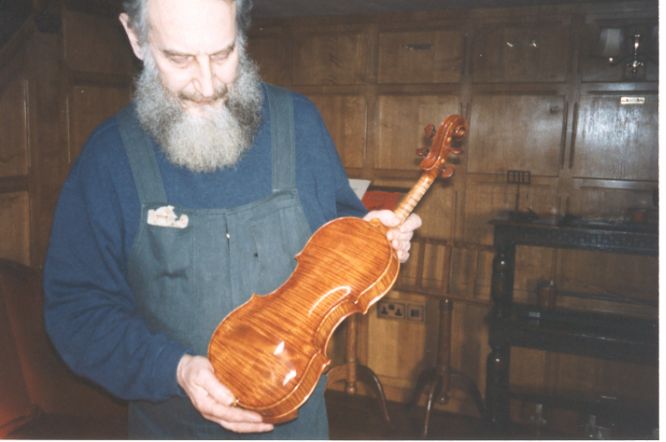
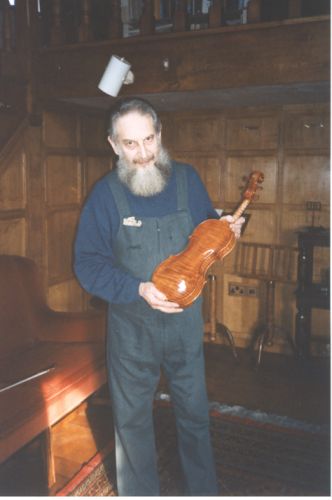
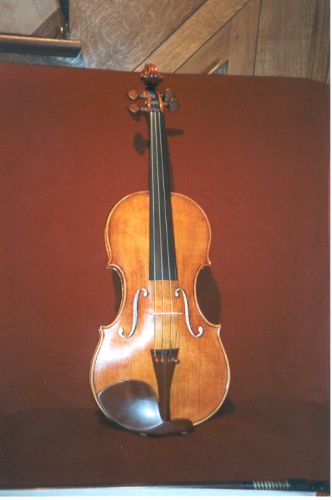
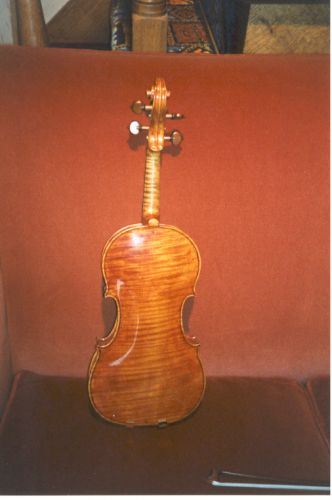
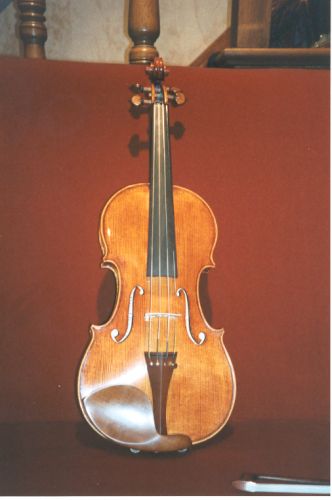

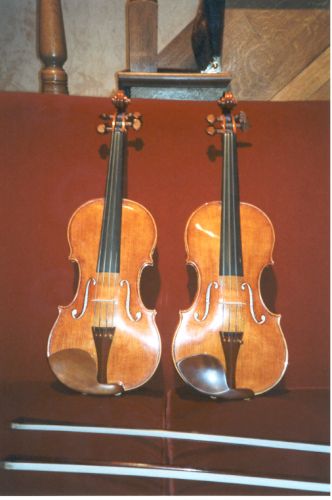
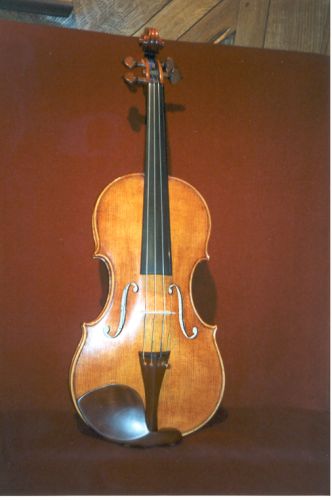
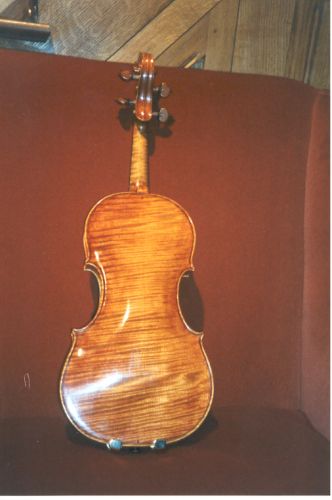
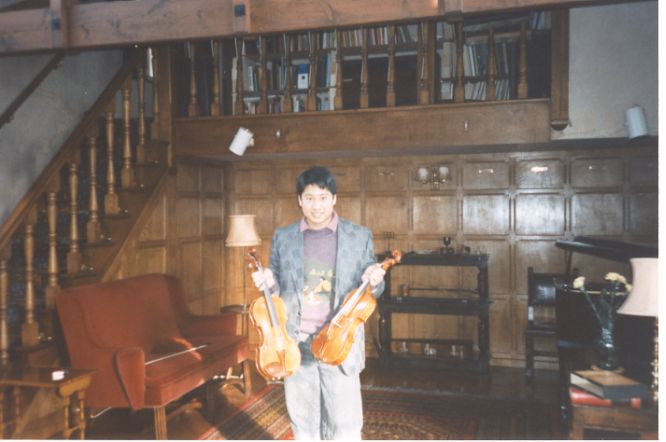
One year Uncle David asked what Aunt Nest wanted for her birthday, and she asked him to make her a violin (although I dont think she played). So he did, and the result was 'Hale Bopp' named after the comet of the same year. It is a Guarneri del Gesu copy, and the pegs and chin rest have the same ornamentation. I have a spare peg from 'Hale Bopp.' The violin is shown in a victorian violin case which I acquired from Aunt nest after David's death. I understand that this violin was on loan to a member of the Rubio quartet who was based in Belgium. I enjoyed playing on 'Hale Bopp', it was more soloistic than 'Brenda'. It was after he made 'Hale Bopp' that he said he wanted to make me a better violin. Another special fact about 'Hale Bop'was that it was David's thousandth instrument that he had made. I think it easy to remember Uncle David for the fine violins, violas, cellos and guitars that he made, but he did also make viols, lutes and harpisichords as well, and was very prominent in the 'early music' period instrument playing movement.
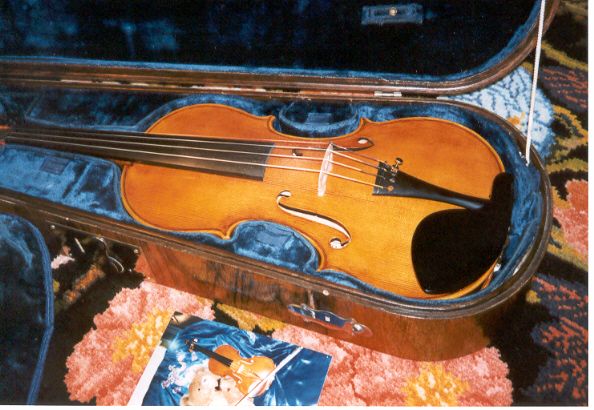
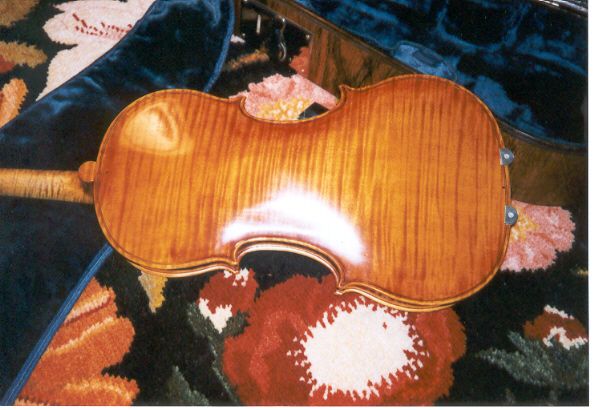
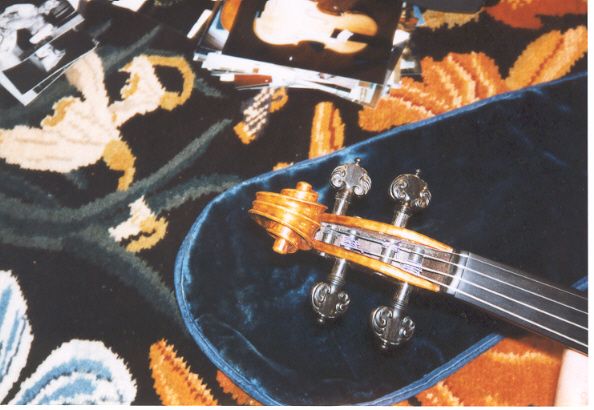
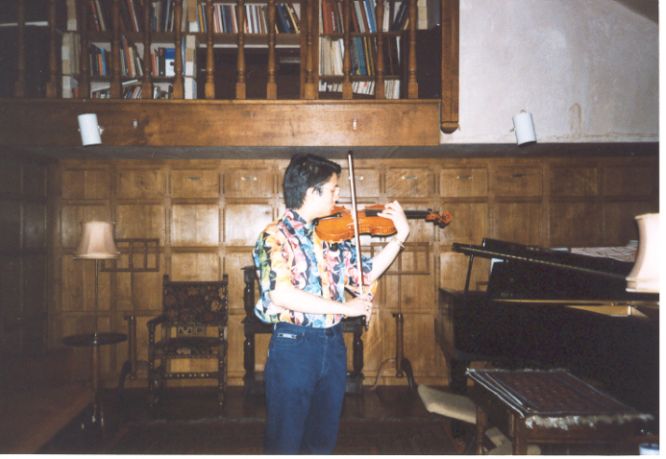
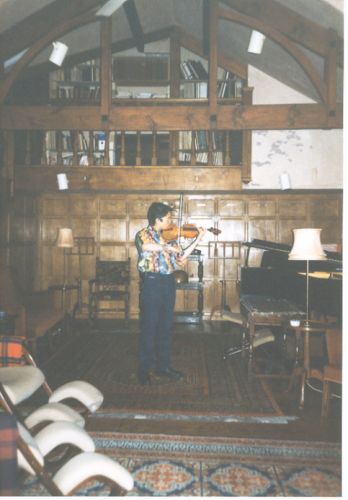
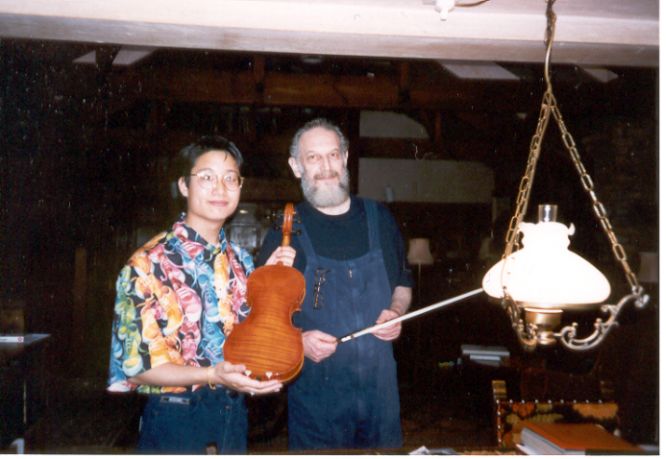
I know that during the period of 1994 to 1997, David had been experimenting with new formulas for varnish. We would often chat about instruments I had seen or had the opportunity of playing on, and I would also visit the Ashmolean Museum in Oxford regularly to look at the Strads and Guarneris in the wonderful Hill Collection. I was fortunate because the museum gave me permission to photograph the instruments. On the old Cremonese instruments, what was left of the varish was transparent. In his earlier violins including Brenda, the varish was clear but after some time would change to matt. Also the volcanic ash mineral ground underneath the varnish often showed through with black lines along the grain. I understand that Aunt Nest's work with her rug making and using natural dyes for the colours also contributed to Uncle David's varnish experimenting. One time I visited, they had cones of different colour dyes everywhere and the new 'gel Gesu' models he was now making had his new varnish applied to them. He told me that now was the time for me to have another of his violins. After a 3-hour coach trip from Oxford University to Cambridge in darkest winter of 1997, I was warmly welcomed by Uncle David and Aunt Nest, and to my delight, he had made two new violins for me to choose from, both based on the 'Vieuxtemps' and 'Rode' models. I was so excited! I spent the entire day trying them. He felt that the Vieuxtemps copy (which he thought was 'more soloist' to coin his own words) suited me the best and I had felt the same, and I chose that violin as my replacement for 'Brenda'. I named it 'Benton' after my Grandpa. Here is a photo Brenda Farrow trying it out with a bow by Cambridge bow maker Richard Wilson:
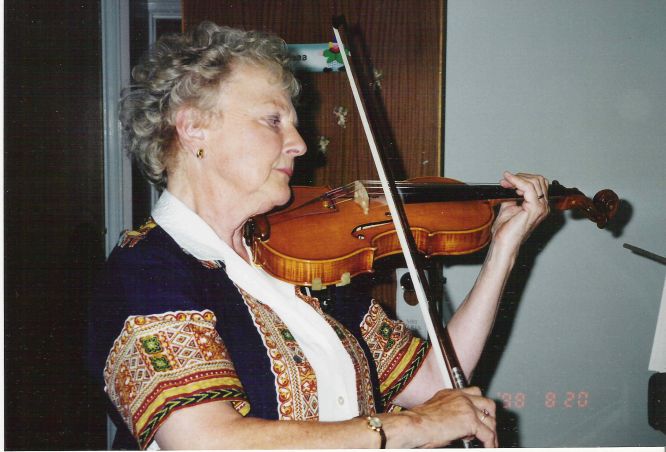
He was wonderfully suportive about my violin playing and studies, and would invite other players or teachers who he knew to his home to hear me play and perform, or recommend me to play to or approach certain teachers or violinists. He referred to me as his 'confident player' If I had any worries or problems, he was definitely someone i always first turned to; he was so knowledgeable and wise. Any advice he gave was always sensible.
At Uncle David's house with Teddy Boar (a violin pedagogue of Cambridge). On that occasion Professor Ralph Raphael (with whom David had collaborated in his research into the mineral grounds on the cremonese violins) and his wife Prudence (an ex-student of Albert Sammons) came to hear me perform. I recall Teddy playing the first movement of the Brahms concerto and Prudence playing the opening adagio movement of the Bach G minor solo sonata. I think I also played a Paganini caprice, Bach's E major preludio and dances from the D minor Partita and C major sonata, Mendelssohn concertos in e minor and d minor, and Bruch no 1. Alas Ralph Raphael died some years ago and Prudence has now stopped playing. The last I heard of Teddy was that he was very frail.
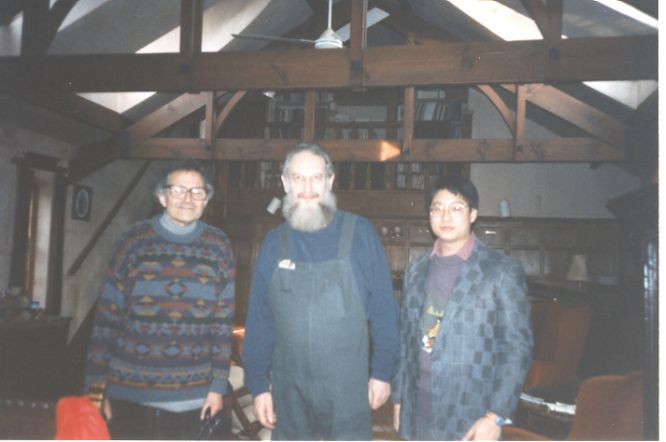
Every time I would visit him, there would be new violins to try, and I found that his violin making just got better and better. My main violin teacher Lydia Mordkovich was his friend and she thought highly of his violins. I remember he sent her a soft toy Bull on her recording of Ferdinand by Alan Rideout on her album Poeme (Chandos). He was also so generous, many gifts of cds, new chin rests, violin accessories and strings; he always put on a new set of strings for me and introduced me to Helicore and Zyex strings when they first came out here. We often had lunch at the pub restaurant just over the way opposite the workshop. He would never let me pay but always treated us to lunch. Only on one rare occasion he and Aunt Nest left the vicinity of their workshop to have chinese dim sum lunch with us. They were both so work orientated they practically never left the house!
Photos of two Amati copies made by Uncle David with Classical and Baroque set ups. Note the classical chin rests, shorter fingerboards, more arching of the table on the baroque violin, and flatter tail pieces. I simply adore the colour of the varnish on these two instruments. I do not know who ended up buying them, but they sure are lucky! I think that the classical violin table was yet to be varnished in comparison with the rest of it.
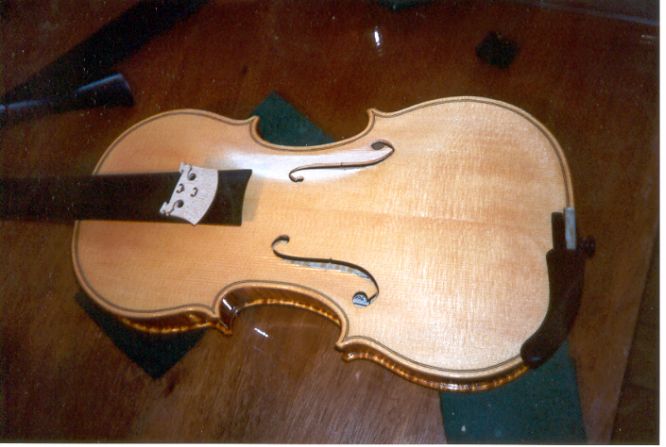
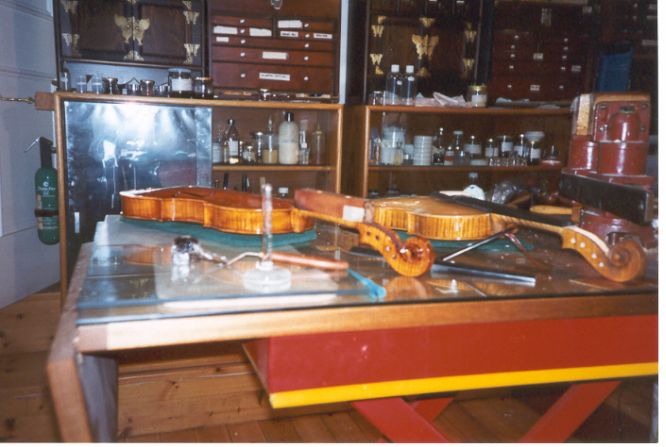
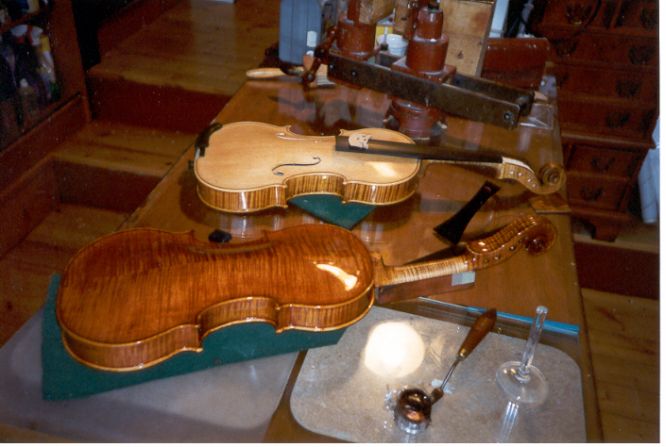
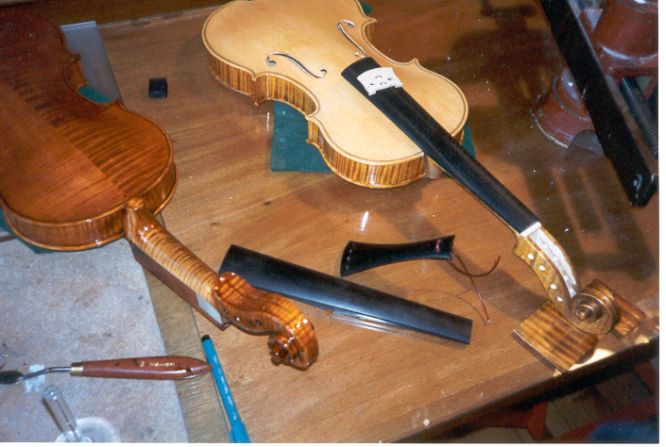
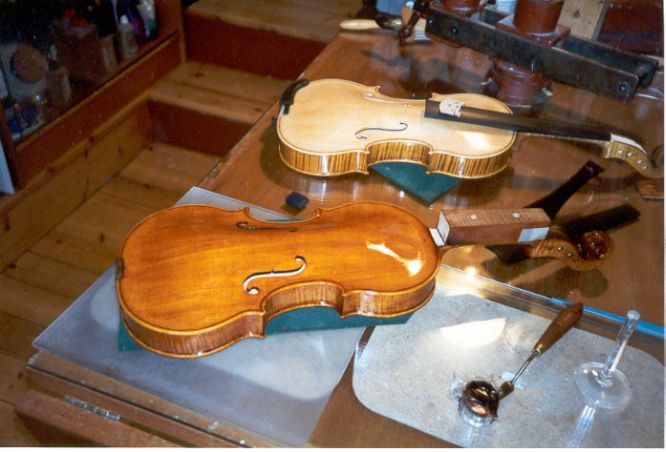
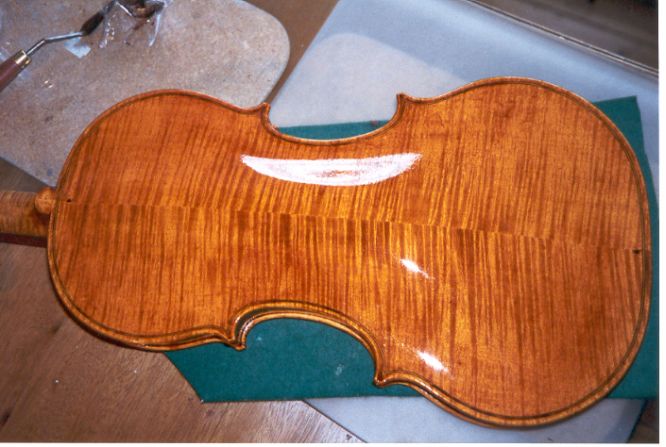
Two newly finished Rubio guitars. The two violins were early Rubio violins.

Always striving for perfection, Uncle David conducted a number of experiments concerning his varnish. On the old cremonese the varinish was transparent and the mineral ground/ grain of the wood shone right through. On Uncle David's earlier violins, the varnish was transparent to begin with, but over a period of time, it would become dull and have an almost matt finish. In the photo below, you can see Uncle David's soundwave machine which he would demonstrate tuning of the plates with tea leaves, which would dance at diffrent patterns to different frequencies. Above on the wall are a number of flattend cones of different colour dyes. Aunt Nest aided David with her cold water wool dying processes for different colours. You can see the different colours produced, some of which later were applied to the varnishing process. On the left of the photo is a cast of the 'Cathedral' Strad which was played at one stage by Nigel Kennedy. I gathered from Uncle David that he was quite fortunate to get casts, tuning and measurements of old Cremonese instruments. The other wall mounts are photos of violins that he made and pictures of traditional Klezmer fiddlers.
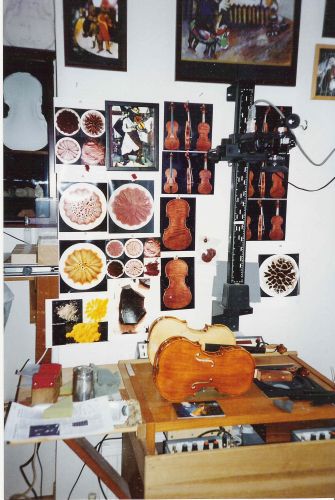
Uncle David's health began to fail him and he had been ill an unwell for sometime. He had suffered greatly from back problems and had operations on his back, hips, a hernia, and stomach. He was later diagnosed with cancer. He and Aunt Nest were totally devoted to one another and sadly he died in October of 2000. I understand that his last violin was stringed by Neil Ertz and Dr Simon (one of David's Amercian clients and a friend) played to him on his deathbed. I was devasted as I had not seen him for sometime, but not only that, I had lost a person very dear to me. I miss him terribly. However, he lives on in the legacy of his instruments and I think of him everytime i play my Rubio violin. His achievements were recognised by Cambridge University who conferred him with an Honorary degree which he was utterly delighted with.
A Memorial concert to celebrate the life of David was held at the Cambridge University Faculty of Music on 7 January 2001. Many players and friends of David came. Below are photos from the exhibits of David's work and the programme of the concert. Acknowledgements to the Music Faculty who produced the programme.
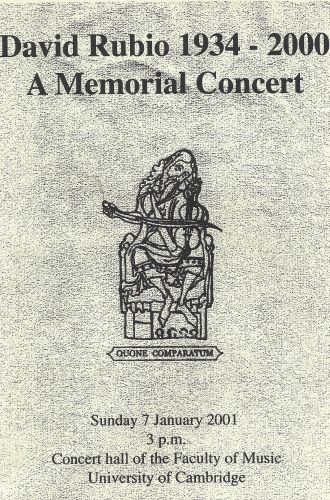

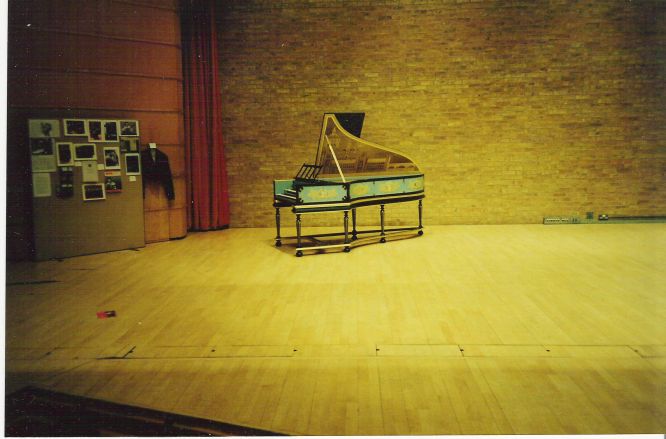

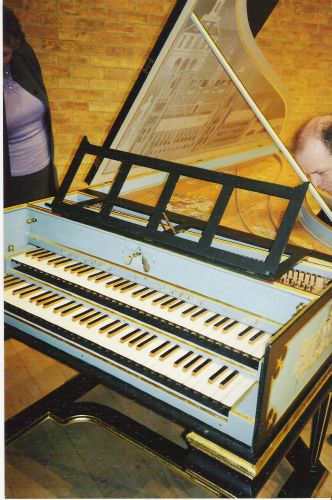
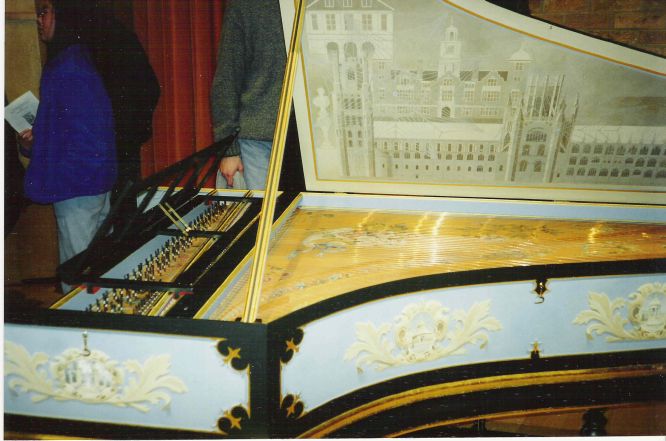

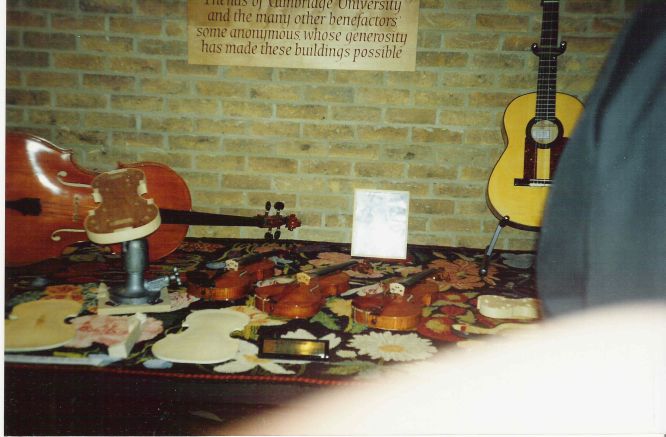
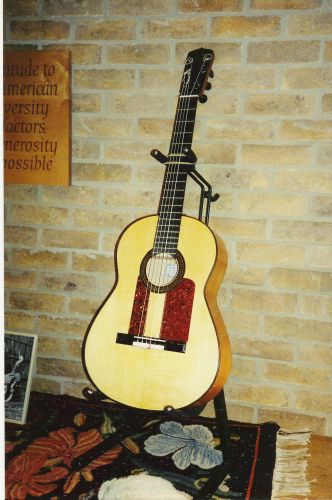
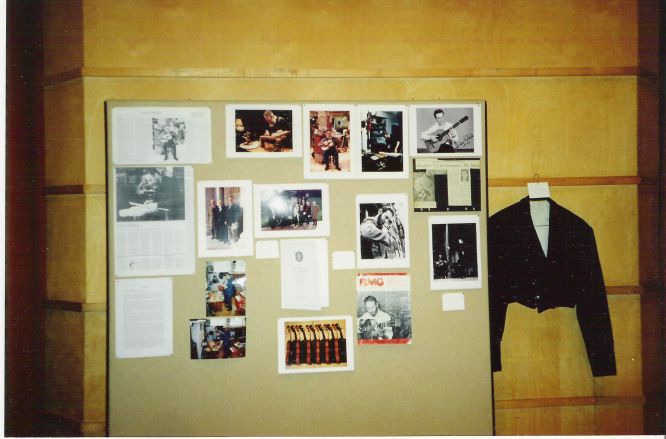
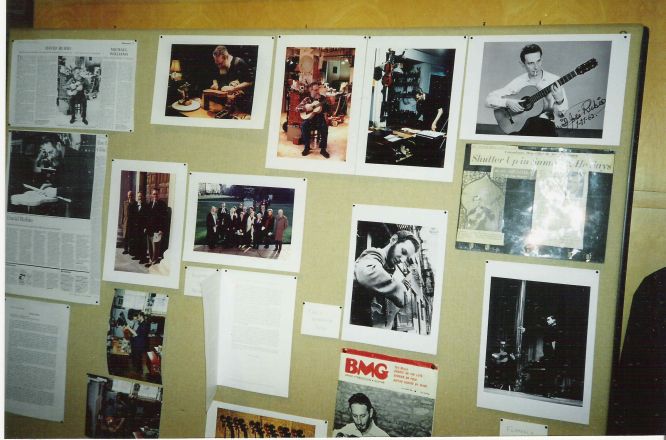
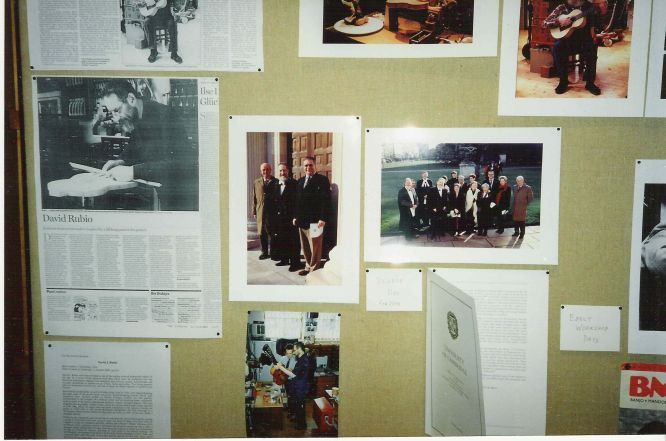
Since Uncle David's passing in 2000, I had kept in touch with Aunt Nest who was dedicated to her art of rug making and weaving to the last. She was extremely distressed at Uncle David's passing as they were totally devoted to each other. She sadly passed in Jun 2012 working until the end, with her last an unfinished rug on the loom in her workshop.
Spencer bear and his brother Mark have now come to live with me. Spencer bear used to live upstairs in the main room on a table with his cello, music stand and music written for him. Mark used to be in the workshop with David and Nest, kitted out with his tape measure, torch, thumb plane and a sweetie in his back pocket! Now they sit in my music room keeping me company along with the music bears! :-)
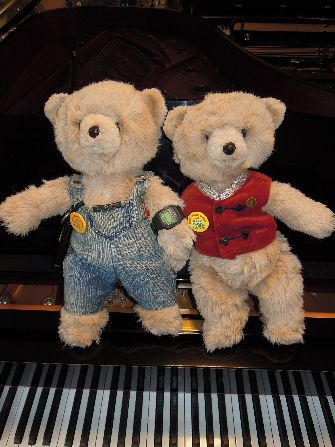
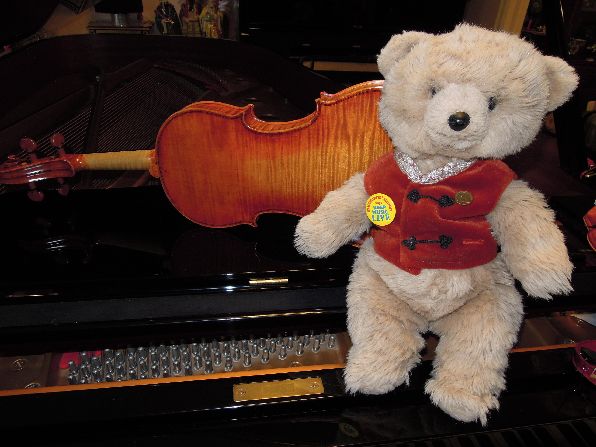
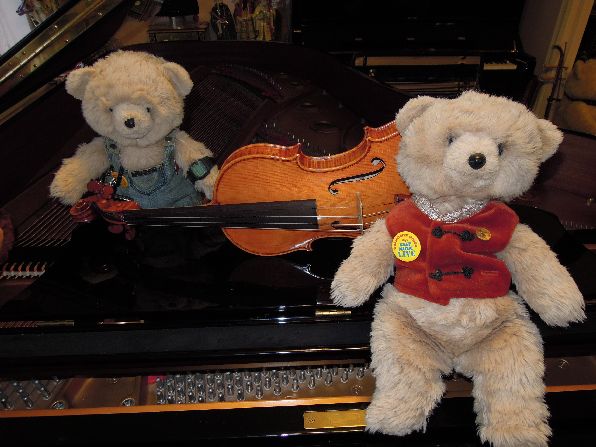
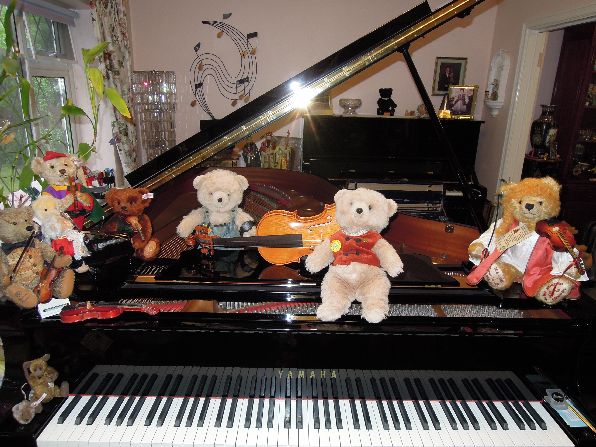
This is a recent photo of me playing my Rubio violin
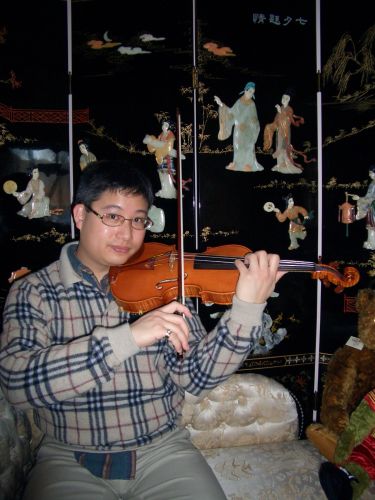
Contact Jena! :-p If you would like to discuss more about David Rubio, or if you knew him too, I will be very pleased to hear from you.
Last Updated: 9 April 2016